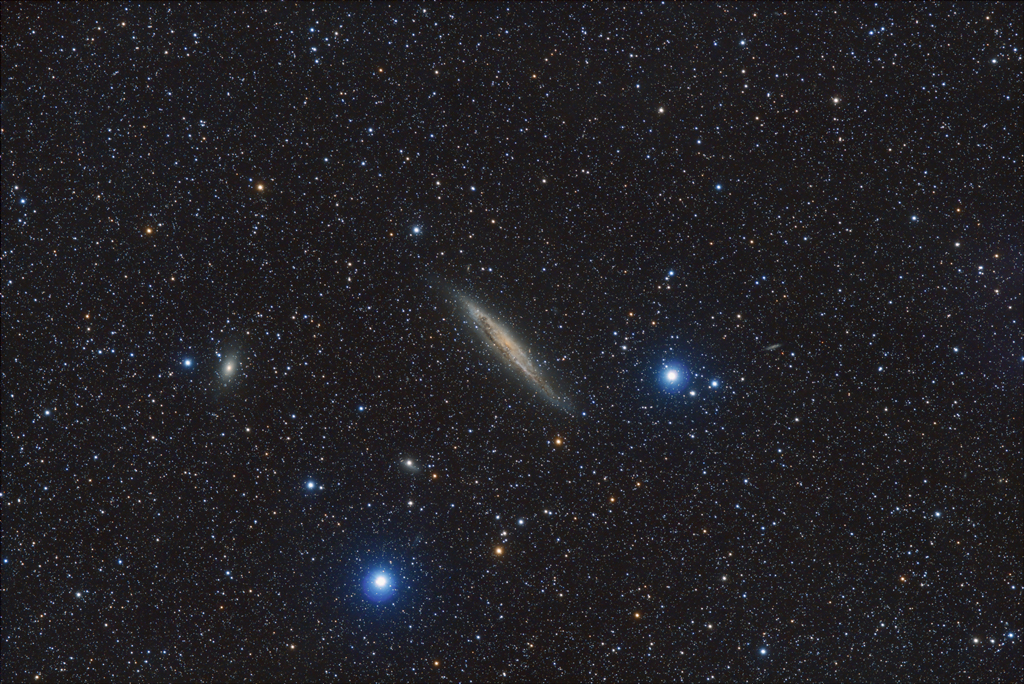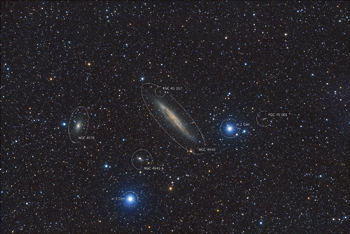 |
CHAMÄLEON + ONJALA OBSERVATORY DeepSky | SITEMAP HOME CHAMÄLEON |
|
 |
|||
| « back to overview Galaxies | Load higher resolution (1800 x 1200 Pixel 2800 x 2100 Pixel) | Object description |

NGC 4945 is a barred spiral (Hubble type SBc) with a chaotic dust band in the plane of the galaxy, which we see almost in an edge-on view. Together with several galaxies, including Messier 83 and NGC 5128, it forms the so-called NGC 5128 group (LGG 344).
It belongs to the class of Seyfert galaxies, which are characterized by a very active galactic nucleus. This activity is probably triggered by a highly active and supermassive black hole. A special feature is a strong H2O maser emission.
With a diameter of about 140,000 light-years, NGC 4945 is larger than our Milky Way. The distance to the solar system is about 17 million light years. The galaxy was discovered by James Dunlop on April 29, 1826.
NGC 4945 A is also a barred spiral of the Hubble type SBm. Its diameter is about 45,000 light-years at a distance of about 53 million light-years. The visual magnitude is 12.5 magnitude class. The apparent size is 2.5 x 1.6 arcminutes.
NGC 4976 is an elliptical galaxy (Hubble type E4). It is located about 57 million light years from the solar system and is about the size of our galaxy with a diameter of 100,000 light years. Its apparent size is 5 x 2.5 arcminutes, and its visual magnitude is 10th magnitude. NGC 4576 was discovered by John Herschel on March 31, 1835.
 |
PGC 45 001 has an apparent size
of 2.5 x 0.6 arcminutes and a B magnitude of 14.5. The distance is estimated to
be 60 million light-years. PGC 45 317 has an apparent size of 1 x 0.2 arcminutes and a B magnitude of 15.4 magnitude class. The distance is estimated at 370 million light-years. « Click here or on the thumbnail to load a large image with object designations. NGC 4945 lies in the sky not far from NGC 5139, the globular cluster Omega Centauri. We show an image with 200mm focal length and both objects together here ... Images of two other large cluster members of LGG 344 - Messier 83 and NGC 5128 here. |
 |
 |
 |
 |
 |
 |
 |
| Sun | Moon | Solar System | DeepSky | Widefield | Miscellaneous | Spec. Projects |